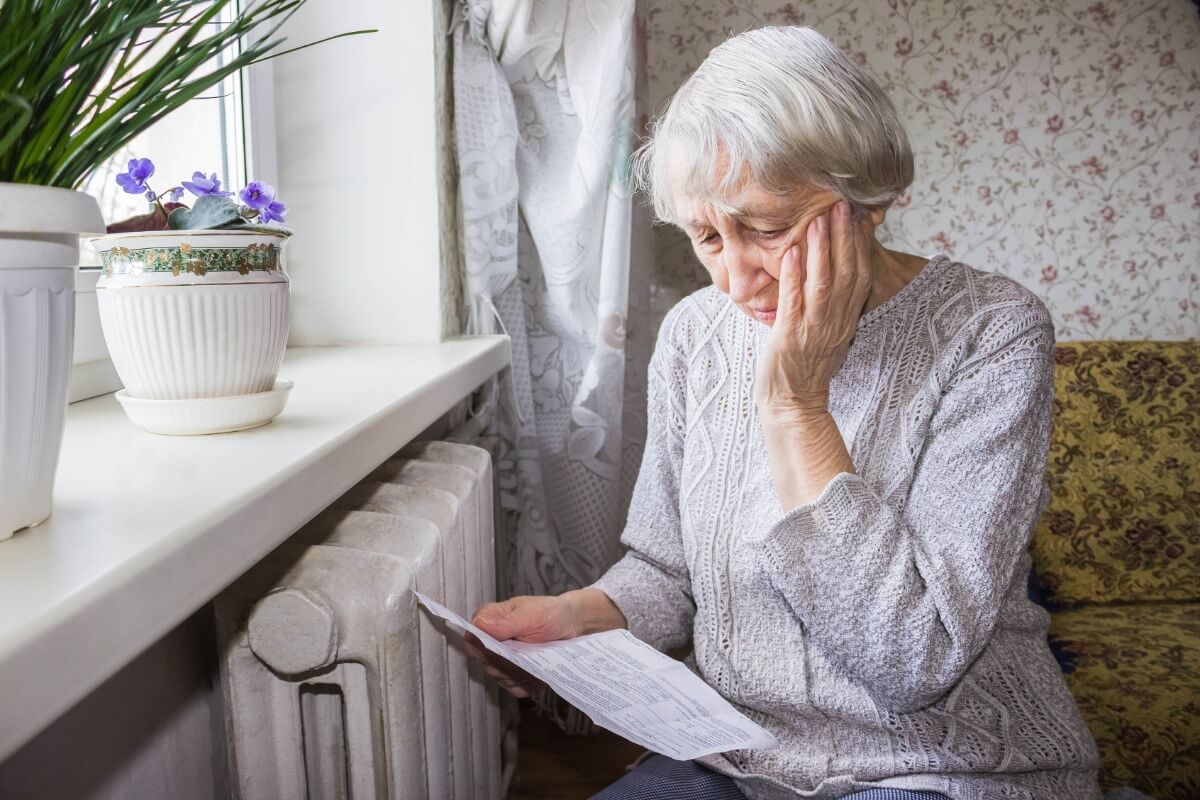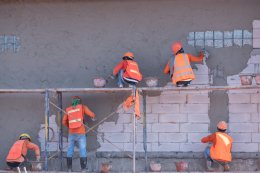
Amid a worsening energy crisis in Australia, many households have received a letter telling them that gas prices will soon be changing.
In South East Queensland, New South Wales, South Australia and the ACT, gas prices tend to be adjusted annually on 1 July each year. Households and small businesses on variable rate gas plans have already been notified of price changes from 1 July with their current retailer. This is because retailers must notify customers at least four weeks in advance if there will be changes to gas rates.
While final pricing will not be published by retailers until 1 July, we should have an idea on gas pricing changes within the next week across the board. This could help guide whether your current retailer is offering a good deal or whether there will be better options available on the market.
Unfortunately, there’s no Default Market Offer for gas as there is for electricity, so it isn’t easy to forecast what the changes will be. However, given that spot market gas prices have reached new highs, demand for gas is rising, capacity is being impacted by increasing international demand and the cost to purchase gas is on par with global prices, it’s likely prices will increase across the board.
Some customers have already received communication advising them of significant increases from 1 July, giving us an early indication that gas prices will increase across the board for households and small businesses. However, the exact change will vary based on your distributor, retailer and gas plan type.
Customers are advised to compare their options before 1 July to try and lock in a better gas deal. Fixed rate gas plans may be a more stable option, as they lock in prices for a set period. However, as we’ve seen with electricity, many fixed rate offers are disappearing from the market amid the worsening energy crisis.
How does the price of gas currently compare across retailers?
Compare the Market research looked at the cheapest and most expensive available gas plans in South East Queensland, South Australia and New South Wales (as of 08/06/2022). We found that someone on the most expensive plan could save hundreds of dollars by switching to the lowest. Of course, exact savings would depend on your usage, plans available in your area and any discounts or promotions you may be entitled to. All prices are inclusive of GST. Some plans can only be accessed via invitation or can only be accessed if you meet certain requirements, such as having solar panels or a smart meter.
New South Wales (postcode 2000)Alinta Energy’s Priority Plus Gas (invitation only)Dodo Residential Standing
| State | Cheapest Gas Plan Available | Most expensive gas plan available | Price difference from most expensive to least expensive |
| Per year | $830 a year | $1,420 a year | $590 a year |
Based on a household of 4-5 people, using gas heating to warm their home, using an average of 85.6 MJ/day on a single rate tariff. Estimated prices were obtained from Energy Made Easy and are based on typical usage in 2000 postcode. Prices exclude concessions and rebates.
Dodo’s Residential Market plan is the cheapest gas plan available that doesn’t require an invitation. At $850 a year, it’s $570 cheaper than the most expensive plan.
South East Queensland (postcode 4000)Alinta Energy’s Priority Plus Gas (invitation only)Globird Energy’s Residential DMO-AGN QLD (Brisbane)
| State | Cheapest Gas Plan Available | Most expensive gas plan available | Price difference from most expensive to least expensive |
| Per year | $680 a year | $1,020 a year | $340 a year |
Based on a household of 4-5 people, using an average of 31.2MJ/day on a single rate tariff. Estimated prices were obtained from Energy Made Easy and are based on typical winter usage in 4000 postcode. Prices exclude concessions and rebates.
Alinta Energy’s HomeDeal Gas plan is the cheapest gas plan available that doesn’t require an invitation. At $710 a year, it’s $310 cheaper than the most expensive plan.
South Australia (postcode 5000)Simply Energy’s SA Simply Energy Solutions Hot Water 12% off gas (solar panels, internet and a smart meter required)Globird Energy’s ULTRASAVE Residential(AGN SA)-AGN SA
| State | Cheapest Gas Plan Available | Most expensive gas plan available | Price difference from most expensive to least expensive |
| Per year | $1,250 a year | $1,980 a year | $730 a year |
Based on a household of 4-5 people, using gas heating to warm their home, using an average of 102.1 MJ/day on a single rate tariff. Estimates were obtained from Energy Made Easy and are based on typical usage in 5000 postcode. Prices exclude concessions and rebates.
Energy Australia’s Flexi Plan – Comparator is the cheapest gas plan available that doesn’t require a household to have solar panels, internet and a smart meter. At $1,360, it’s $620 cheaper than the most expensive plan.
What could a price increase look like on the cheapest and most expensive plans available?
While we’ll have a better idea of what gas prices will look like with each retailer in each location next week, Compare the Market has crunched the numbers to see what a 5%, 10%, 15% and 20% increase would look like for the cheapest and most expensive gas plan available in each location. Exact amounts will vary based on your distributor, retailer and gas plan type, so the following should be used as a guide only.
New South Wales (2000)
Per year$830 a year$871.50 a year (+ $41.50)$913 a year (+ $83)$954.5 a year (+ $124.50)
$996 a year (+ $166)
| Cheapest plan available Alinta Energy’s Priority Plus Gas | Current price | Price with 5% increase | Price with 10% increase | Price with 15% increase | Price with 20% increase |
Per year$1,420 a year$1,491 a year (+ $71)$1,562 a year (+ $142)$1,633 a year (+ $213)
$1,704 a year (+ $284)
| Most expensive plan available Dodo Residential Standing
| Current price | Price with 5% increase | Price with 10% increase | Price with 15% increase | Price with 20% increase |
Based on a household of 4-5 people, using gas heating to warm their home, using an average of 85.6 MJ/day on a single rate tariff. Estimated prices are based on typical usage in 2000 postcode. Prices exclude concessions and rebates.
South East Queensland (4000)
Per year$680 a year$714 a year (+ $34) $748 a year (+ $68) $782 a year (+ $102)
$816 a year (+ $136)
| Cheapest plan available Alinta Energy’s Priority Plus Gas | Current price | Price with 5% increase | Price with 10% increase | Price with 15% increase | Price with 20% increase |
Per year$1,020 a year$1,071 a year (+ $51) $1,122 a year (+ $102)$1,173 a year (+ $153)
$1,224 a year (+ $204)
| Most expensive plan available Globird Energy’s Residential DMO-AGN QLD(Brisbane) | Current price | Price with 5% increase | Price with 10% increase | Price with 15% increase | Price with 20% increase |
Based on a household of 4-5 people, using an average of 31.2MJ/day on a single rate tariff. Estimated prices are based on typical winter usage in 4000 postcode. Prices exclude concessions and rebates.
South Australia (5000)
Per year$1,250 a year$1,312.50 a year (+ $62.50 $1,375 a year (+ $125)$1,437.50 a year (+187.50)
$1,500 a year (+ $250)
| Cheapest plan available Simply Energy’s SA Simply Energy Solutions Hot Water 12% off gas | Current price | Price with 5% increase | Price with 10% increase | Price with 15% increase | Price with 20% increase |
Per year$1,980 a year$2,079 a year (+ $99)$2,178 a year (+ $198)$2,277 a year (+ $297)
$2,376 a year (+396)
| Most expensive plan available Globird Energy’s ULTRASAVE Residential(AGN SA)-AGN SA | Current price | Price with 5% increase | Price with 10% increase | Price with 15% increase | Price with 20% increase |
Based on a household of 4-5 people, using gas heating to warm their home, using an average of 102.1 MJ/day on a single rate tariff. Estimates are based on typical usage in 5000 postcode. Prices exclude concessions and rebates.
How have gas market prices changed in Queensland, New South Wales and South Australia?
The average market price of gas has increased since 2020/21 in South Australia, South East Queensland and New South Wales, after each location enjoyed decreases in prices between 2019/20 and 2020/21.
South Australia (Adelaide)7.136.5410.79
| State | 2019/20 ($/GJ) | 2020/21 ($/GJ) | 2021/22 ($/GJ, current at 1 April 2022) |
| South East Queensland (Brisbane) | 5.77 | 6.32 | 10.60 |
| New South Wales (Sydney) | 6.49 | 6.21 | 10.50 |
Source: AER – ‘Gas Market Prices’ – Accessed 07/06/2022
However, wholesale gas prices in the spot market have increased dramatically in recent months, with many households and businesses noticing increases on their gas bills. The AEMO has started capping the gas price in the market to $40/GJ after prices soared to $800/GJ in some areas. Even compared to prices of around $10/GJ that many Australians have been paying, this is still extremely high.
Why are gas prices increasing?
Put simply, Australia exports a lot of the gas produced here, meaning supply is tight onshore. With Australia now in the winter months, gas demand has increased as more homes and businesses rely on gas heating to stay and there’s less supply to meet this demand.
Due to gas shortfalls in southern states, Queensland gas producers have needed to export gas through the South West Queensland Pipeline to South Australia, Victoria and New South Wales to meet demand.
Meanwhile, coal power station outages, coal supply problems, and rising coal prices have also meant that more gas is being used for electricity generation – adding fuel to the worsening crisis. In a nutshell, gas prices are increasing because:
- Demand is rising now winter is upon us
- Capacity is being impacted by the rising demand internationally (such as countries ceasing use of Russian gas supplies and not enough supply to meet demand)
- Drilling to increase supply is not instantaneous
- Gas purchase is at the same rate as the international rate
How much will gas prices increase by?
We expect prices to increase, but by how much and how soon is difficult to predict. We do know that the market is extremely volatile and changing every day. With major gas retailers like Weston Energy going out of business and the retailer of last resort scheme being initiated for affected customers, residents and businesses are being moved to new retailers and plans – often with higher prices than they were paying before.
What can people do to lock in lower gas rates?
Use services like Compare the Market’s energy comparison tool to compare a range of retailers and plans on the market. However, with more retailers withdrawing from the market and removing competitive offers, there’s a small window of opportunity to lock in a rate.
Consider whether you want a fixed rate gas plan – which locks in a rate for a set period – or a variable rate gas plan – where rates can change with the market. While fixed rate plans are often less competitive, they do provide you with certainty about the rate you’ll pay over the year.
For more information, please contact:
Phillip Portman | 0437 384 471 | [email protected]
Compare the Market is a comparison service that takes the hard work out of shopping around. We make it Simples for Australians to quickly and easily compare and buy insurance, energy, travel and personal finance products from a range of providers. Our easy-to-use comparison tool enables consumers to find products that best suit their needs and back pocket.







